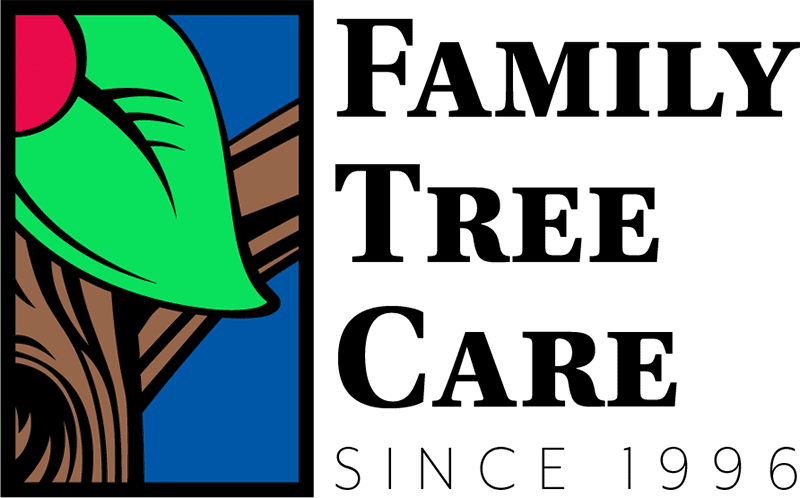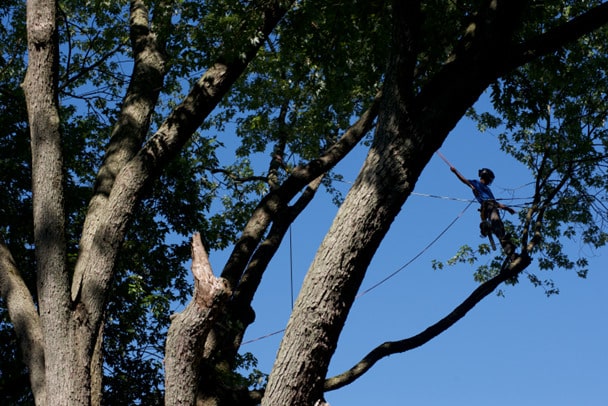Making the decision to prune your tree can be more difficult than it might seem. Is it really necessary? Am I justified in wanting to prune it? What does pruning my tree accomplish? These are common questions that Family Tree Care gets when talking about pruning. Good news, we are here to help!
There are six common reasons for pruning a tree, a vista prune, a clearance prune, a clean, an elevation, a reduction, or a structural prune.
Vista Prune

A vista prune is common for trees on Connecticut’s shoreline. As the name suggests a vista prune is used to prune a tree to provide a better view. This is often done to enhance the view of the ocean or another body of water. Sometimes we do it to open the view across a landscape such as down a hillside. Vista prunes usually prioritize the needs of the client because the trees are much happier growing to their full potential. It is also common to vista prune annually or biennially in order to maintain the desired view.
Clearance Prune

A clearance prune is employed in order to keep a certain distance between a tree and some other object, usually a structure. We usually denote clearance prunes in feet. For example, “prune white oak 10 to 15 feet back from chimney.” In this example we are trying to balance the needs of the client and the tree. We don’t want the tree growing into the chimney and damaging the masonry but we also don’t want to remove the whole tree. A clearance prune could also be to prune a tree back from other valuable landscaping. Maybe we give clearance to an understory dogwood tree so that it can bloom undisturbed by its larger neighbor. Another good reason to clearance prune a tree is to get it back from the power lines going to your house. In most cases it is your responsibility to keep branches from rubbing on your power lines and a clearance prune is a great way to do so.
Clean Prune
A cleaning prune is a prune that cuts out any dead, diseased, dying, or structurally unacceptable branches. Cleaning your tree can be important for its health and for your safety. Pruning out diseased branches removes harmful pests (insects and fungi) from the tree and it reduces the risk of a limb falling on you when you’re mowing the lawn! Cleaning a tree also aims to prune out any limbs that are rubbing together or have some structural defect which might cause them to fail in the future.
Elevation Prune
An elevation prune is typically used to raise a trees branches up and away from a structure or landscaping. It often allows more light to the ground which can help grass grow better or a garden get more sun. Sometimes we use elevation pruning to raise branches off a driveway or walkway. It is important to imagine how much branches are likely to droop when laden with a wet snow before you make your final elevation pruning decisions.
Reducation Prune
A reduction prune is most often used to reduce the likelihood that a large limb fails. We typically denote a reduction in percentages although it can be written in feet. For example we might write “reduce large sugar maple leader by 6%.” That would be a pretty heavy reduction aimed to prune off 6% of that particular limbs mass. This is most artfully done by making several larger pruning cuts and then blending it carefully by making many smaller pruning cuts. A reduction prune is one of the more challenging pruning techniques and should certainly be done by an arborist or by arborist trained personal.
Structural Prune

A structural prune aims to shape and manipulate the structure of a tree. It is often done on smaller ornamental trees but it can also be done on large mature trees. Structural prunes could also be described as shaping. They may make one or two larger, internal cuts to influence the trees structure, but mostly many smaller cuts are made on the perimeter of the tree in order to give it a desired shape. Structural pruning is also done on younger trees to help ensure that the tree has a healthy structure when it matures. By structurally pruning a tree when it is young we can reduce the likelihood that is can co-dominant leaders or an over extended limb.
These are some of the most common types of pruning that we use at Family Tree Care. There is a lot of nuance in properly pruning a tree that takes practice to master. It is important to have an arborist prune your trees not only because it is the law but also because arborists generally have the knowledge and practice to do a good pruning job. The best tree pruning is often done in such a way that it is difficult to tell the tree has been pruned. It enhances the trees natural beauty and structure while also achieving the goal of the client.
This post was written by Jake Slade. Jake has his Connecticut arborist license issued by the Connecticut Department of Energy and Environmental Protection and a bachelors degree in Environmental Studies.



